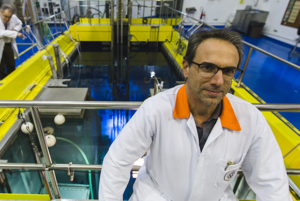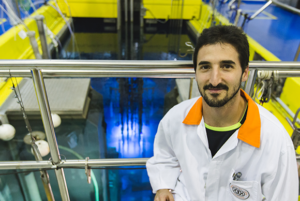2D visualization is clearly limited to comprehend space-filling microstructures. Previous research demonstrated benefits of real-time interaction, interactive 3D visualization and stereoscopic visualization, restating the limitations of static media. A clear limitation of single sections is that it cannot reveal much about the geometry of the sectioned grains or spatial relationships. Microstructures are inherently 3D, space-filling, not-regular and not-random geometric entities and their description should be framed in terms of geometric concepts. However, specific visualization mechanisms for learning purposes are still absent within materials research, especially in the microstructural scale. Therefore, it is paramount to invest in spatial exploration techniques that allow experiencing the inherent 3D geometric nature of microstructures and tackling complex visualization challenges such as the space-filling character.
Fundamental concepts to capture in polycrystalline materials are mainly grain size, shape, number of neighbors, local heterogeneities, extreme values and distribution patterns. Thus, it is paramount for a student in first place to understand characteristics of single features such as grains and other typical defects, how they relate to their neighbors and other elements and then, one can proceed to understand distributions of those elements in materials.
GrainCrawler introduces novel domain-specific interactive tools informed by learning and cognitive research, sought to enhance spatial cognition of grain structures and support learning the afforementioned fundamental features. Interactive real-time sectioning in first-person fly navigation allows infinite sections to be visualized continuously in a brief period, presenting superior visualization value compared to earlier attempts. GC allows the user to seamlessly navigate in first-person through the sample, focusing on exploration on a grain-by-grain basis, assessing size, shape and how many neighbors a grain have but still able to capture structural information.
Intuitive Grain Structure Visualization
Capture Grain Size and ShapeWander Freely Inside Grain Structures
Aimed at improving students spatial perception
Awesome 3D Graphics
Improving depth perceptionFeaturing real-time lighting and Ambient Occlusion
Several options allows improving depth perception from simple 2D scenarios up to full fledged stereoscopic visualization.
Run it Anywhere
PC, Mac, Mobile phone or Tablet - All you need is a web browserCross-Platform
Ideal for web-based courseware and web-accessible databases
Free as in Beer!
Free, open-source software licensed under the MIT LicenseOpen-Sourced
All source code and documentation is available to modify or extend.
- 3D exploration clearly allows better spatial cognition, enhancing grain structures learning.
- Individual grain size, shape and neighbors can be unveiled by translation and rotation movements.
- Fast navigation along the sample also allows one to discover larger or smaller grains and to get a good sense of the whole.
- It’s clear that the interaction leverages advantages of traditional sections and surpasses limitations associated to the static nature that can easily mislead students.
- Improved depth perception (using Stereoscopy, real-time lighting and Ambient Occlusion techniques) shorten substantially the time needed to capture grain geometric characteristics.
Main Project Team
Technical Development & Support
- Ms. André Montes Rodrigues
- Dr. Fernando Bardella
- Luis Gustavo Freire da Costa
Referencing GrainCrawler
To Reference GrainCrawler please use the following format:
soon…











